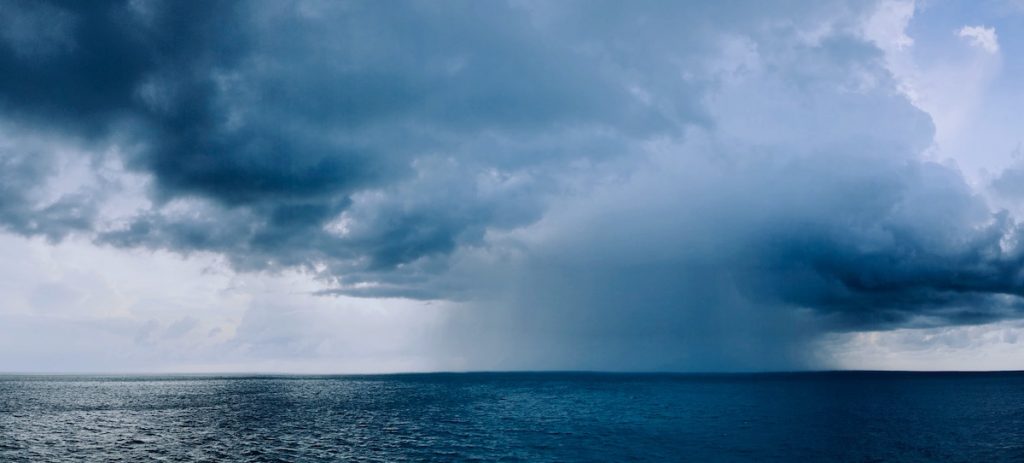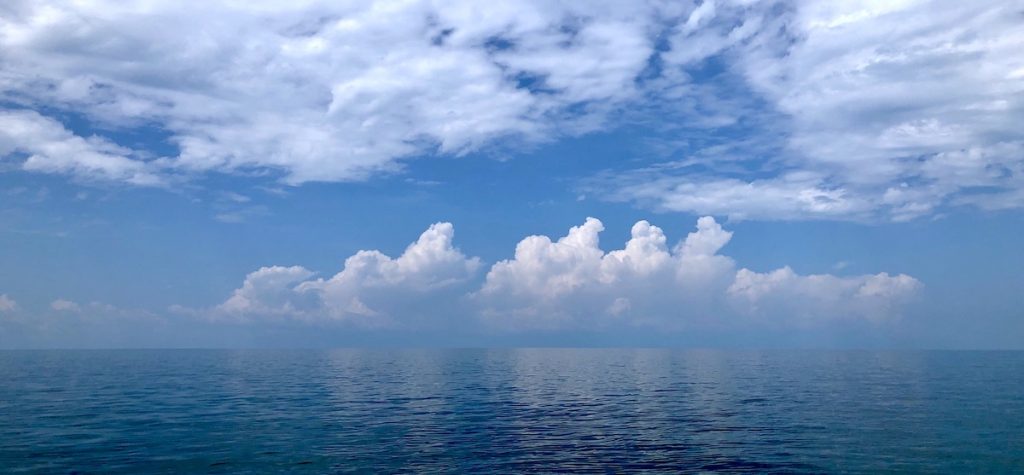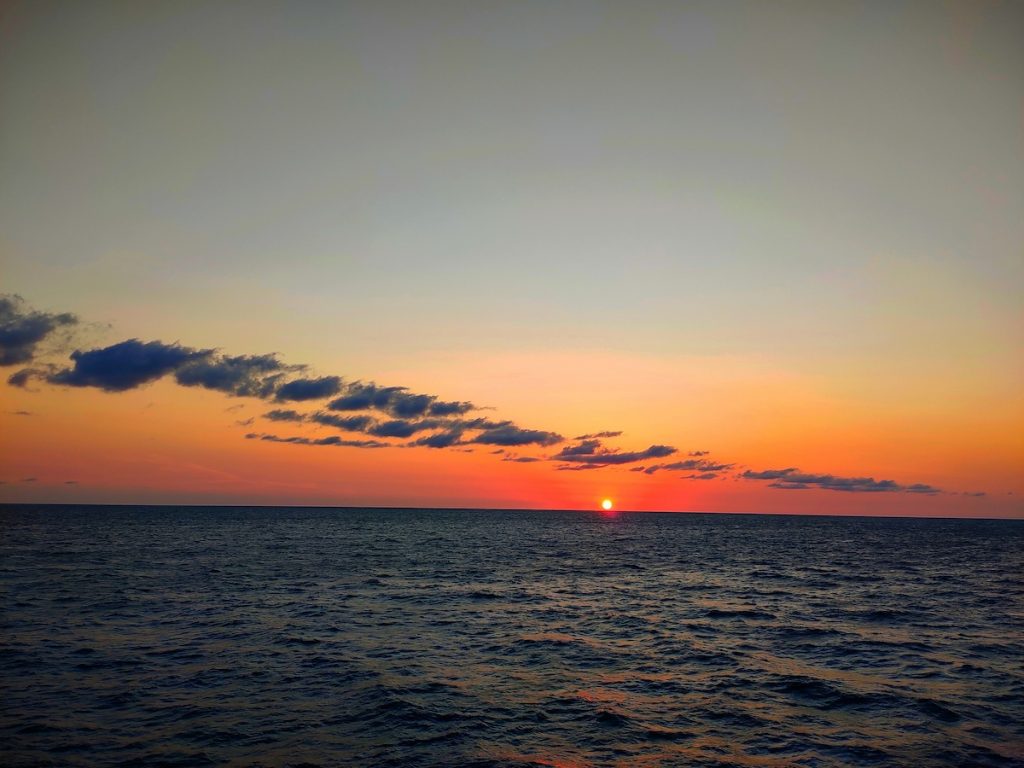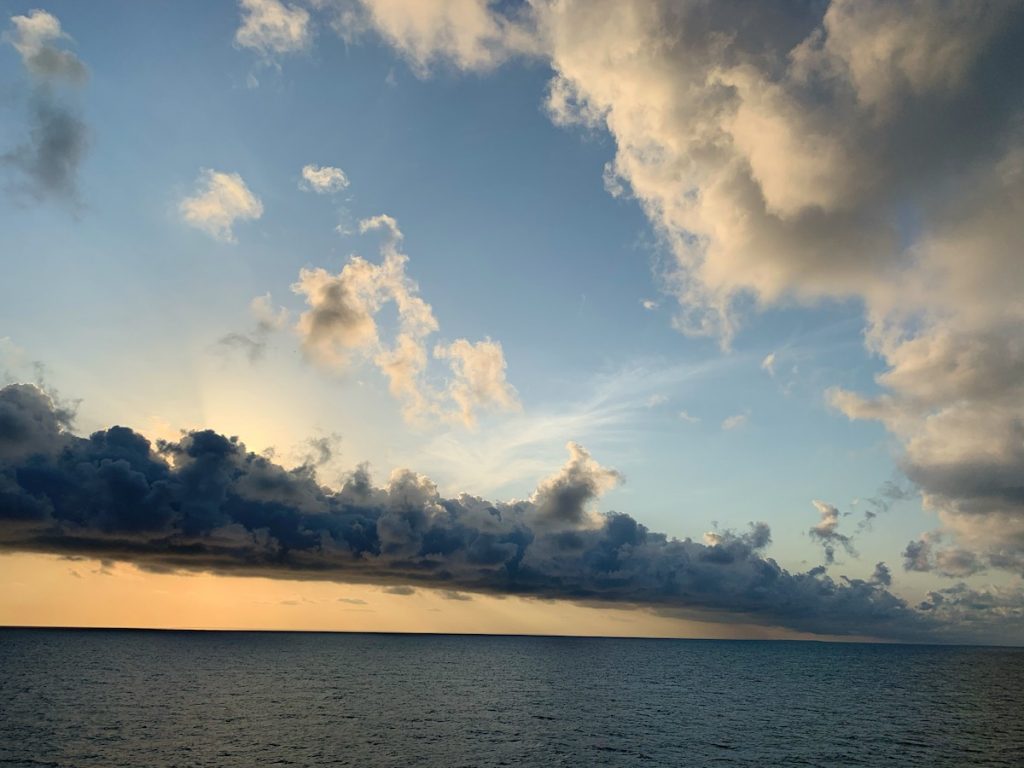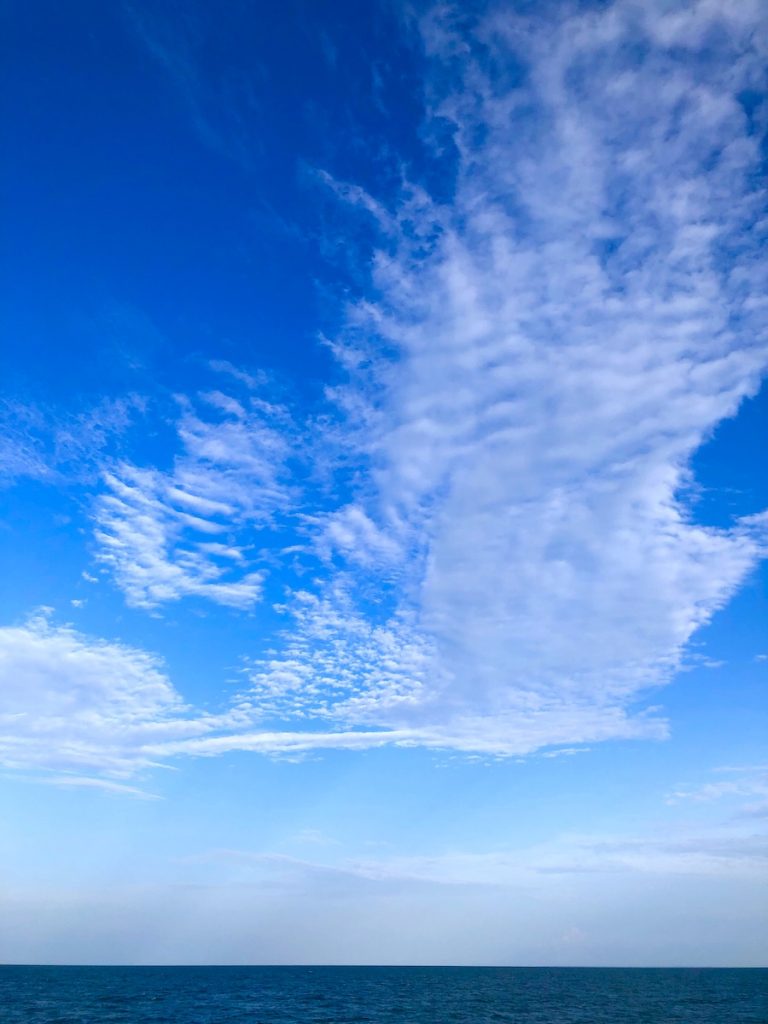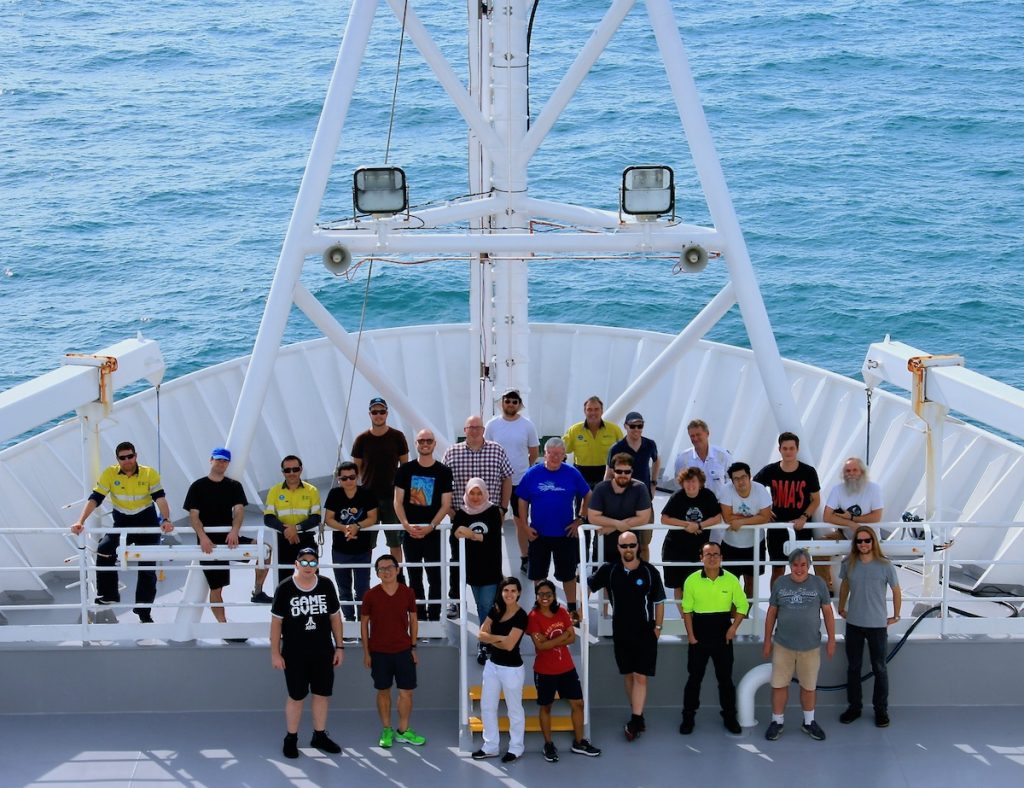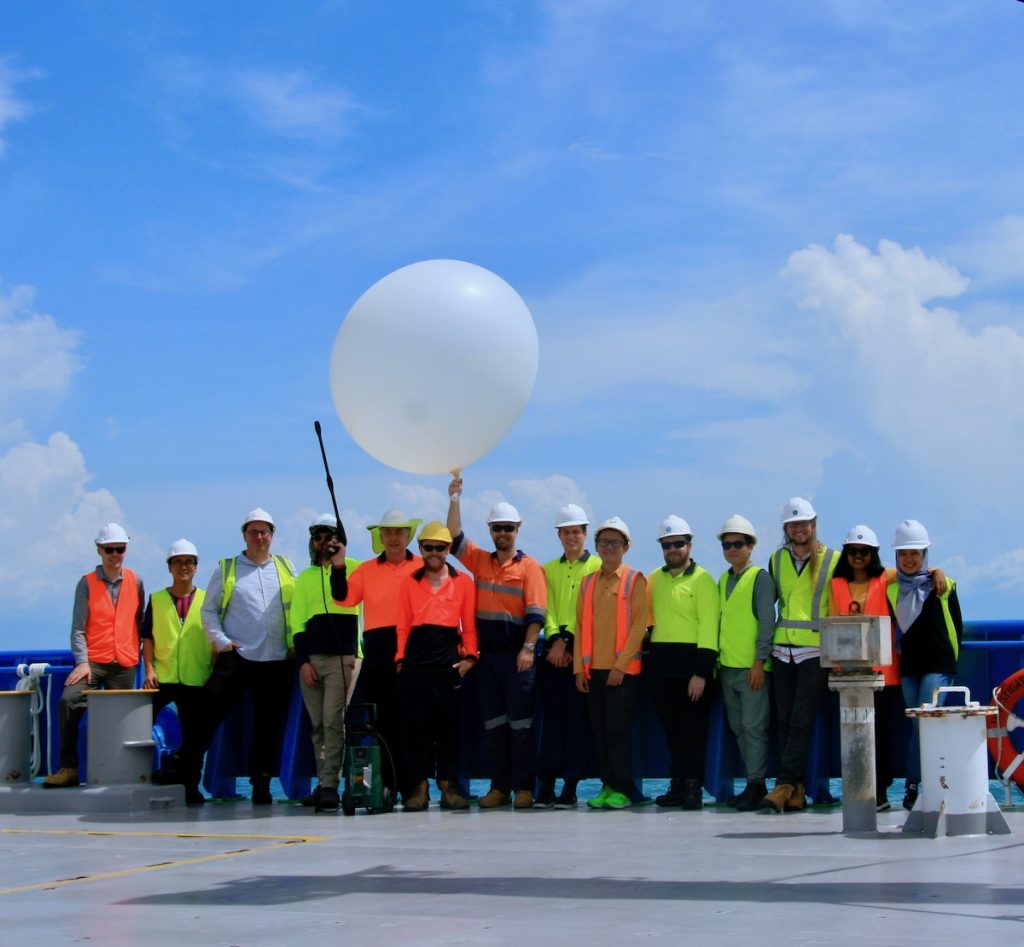by Sonny Truong, Monash University
It has been a while since I was aboard the RV Investigator sailing north of Darwin, Northern Territory, chasing convective storms. Yet, just looking at the old photographs of convective clouds, rippled waves, the ship and the cherished people I had a chance to be with on that voyage instantly brings back pleasant memories. For a moment it feels just like yesterday that I was standing on the front deck in the middle of the ocean, mesmerized by a spectacular radiant sunset together with a gentle wind in the calm summer early evening.
I was lucky enough to be accepted to the voyage at the end of September 2019, just one month before its departure. For that good fortune, I would like to express my gratitude and appreciation to Dr Yi Huang at Melbourne University, Prof Steven Siems at Monash University and Principal Investigator Alain Protat at the Bureau of Meteorology (BOM) for helping me to get on board.
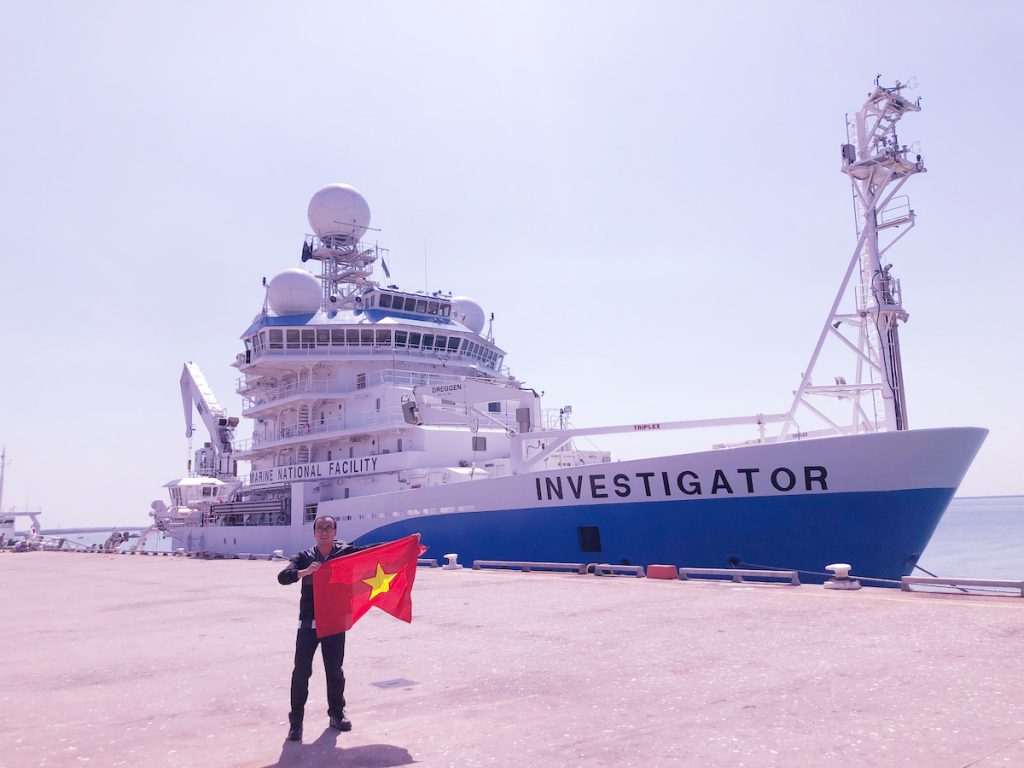
The voyage around Darwin from November 13 to December 17 was part of a project named, Tropical observations of atmospheric convection, biogenic emissions, ocean mixing, and processes generating intra-seasonal sea surface temperature (SST) variability. The project is one of the components of the Year of Maritime Continent Campaign, endorsed by many international universities and organisations.
Generally, the project helps Australia’s climate scientists to gain better insight into several questions such as, why does the Maritime Continent exhibit large mean precipitation biases in many global models? Why do the current models have difficulty simulating the large amplitude diurnal cycle of precipitation? Hopefully, in the near future voyages like this may also reveal the reasons why there is a large negative sea surface temperature bias in the Maritime Continent.
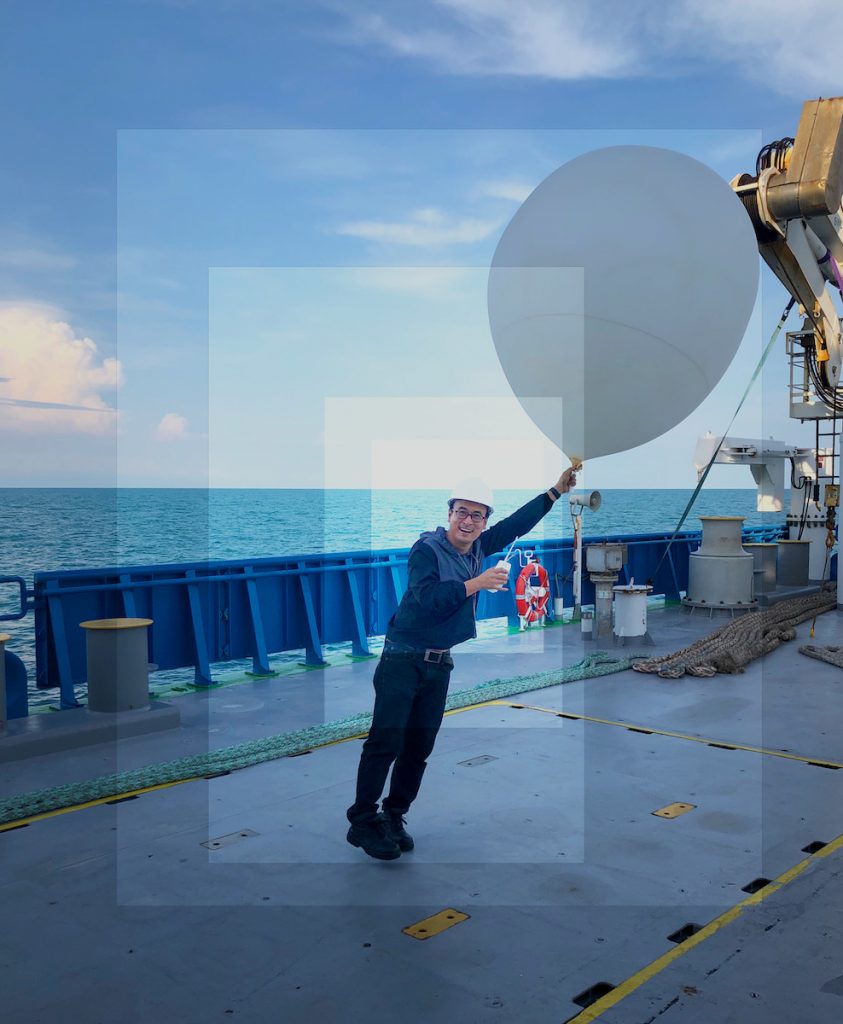
When it comes to talking about the RV Investigator journey, the most awesome part for me was launching a balloon. I can still recall how nervous I was. I must confess that although I have been researching atmospheric science for years, I haven’t had a chance to launch a single balloon yet. Adding to that irony, most of my research conclusions about the boundary layer over the Southern Ocean came from balloon observations. That’s why I was so excited.
That first time, while holding the balloon in my hand and waiting to release it, I was asking myself: “Would it leave my hand smoothly? What if it failed and fell into the ocean? There were a ton of questions jumping around my head at that moment. Then, it was time. I let it go, and just like that, it was gone. Yeah!!! It was amazing to look at the real-time recorded data from that balloon and match them with the real atmospheric condition.
The other enjoyable thing that I really loved doing was recording time-lapse videos to capture the life-cycle of a convective storm from a clear blue sky to cumulus and, finally, to the dissipating stage. Normally, to capture these storms the RV Investigator anchored around 30km offshore.
The sky generally started blue and clear at noon looking towards shore in the direction of Darwin. Around 2pm we would start to see a few puffy, white, cotton-top clouds rising over the land near Darwin. Amazingly, within only 30 minutes or so, these small puffy clouds grew vigorously, turned into a big main updraft tower and then ingested smaller cotton-top clouds. As the convective tower got to a certain height, the cloud spread out into an anvil shape.
One of the amazing things that we observed was that sometimes even as the main tower started forming a small anvil shape, another stronger convective cloud would overshoot the current main tower top.
We observed that the anvil occasionally stretches furthest, which was perhaps due to the stronger upper-tropospheric winds. Even though we can distinguish regions of dark (perhaps updraft) and light (rainy region or downdraft) cloud base, it was still hard to tell where it was raining over Darwin or not, therefore, we checked the real-time radar image to get the sense of where the precipitation (hydrometers) occurred.
By eye (vertical estimate) and weather radar (horizontal distance), we estimated the diameter of the updraft tower was roughly equal to its vertical depth (15 km). There were times when the convective storms developed late in the afternoon, so we could view the magnificent lightning and thunder, and even a waterspout. After this voyage, I am certainly of the opinion that observation is the best teacher.
With regard to the activities onboard, the daily scientific chat before dinner was my preference for the talks. The talks usually started at 4pm. It was considered a great part of the day where students, researchers, scientists, and voyage crew members exchanged not only our current work but also scientific ideas in other fields.
In regards to recreational activities, it was amazing how many means of entertainment were available on the voyage, including ping pong, an arrow dartboard game, books, and movies – the latter often associated with readily available crackers, popcorn, coffee, juices, and fruits.
When it comes to talking about foods, I must express my deep gratefulness to the voyage’s chef who steadily prepared meals for us throughout the days. The food was delicious and mouth-watering.
Outside of this, there were a lot of crazy and super-exciting stories, although perhaps not suitable for this newsletter. I miss my roommate, Jordan (PhD at the University of Queensland); balloon team leader, Joshua Soderholm (BOM); and brother Valentin Louf (BOM) very much.
It would be incomplete not to mention our dedicated leader, Alain, who is also known as the best teller of jokes on the voyage. My most unforgettable recollection of Alain was witnessing him grow increasingly anxious during the first part of our storm chasing mission because there was almost nothing but a run of perfectly pleasant holiday-like summer days. Despite this, his enthusiasm for observing and sharing his expertise with other PhD students and colleges never flagged. As a Principal Investigator, he must be very busy, but Alain seems to maintain a very fine balance between productivity and playfulness. Regardless of his workload, he always tried to keep everyone motivated and entertained, especially as towards the end of the voyage some of us felt bored and missed home.
Eventually, our hard work did pay off after waiting days and nights. Towards the latter half of the voyage, convective storms developed over Darwin and propagated further offshore. These were fully captured by our weather radars. I can still feel the joyful moment when the entire atmospheric team came outside and enjoyed the rain while a lightning-filled storm passed over us. It sounds fun and scary, doesn’t it.
Finally, I would like to take this opportunity to sincerely thank the Marine National Facility, all the support on RV Investigator, the voyage crew for taking great care of me providing a decent place to sleep and a tasty meal to eat every single day, and, of course, to all the international and domestic friends, students and scientists. You are all great and talented. I look forward to reading the results from RV Investigator Voyage IN2019_V06 journey. Thank you all for filling my PhD life with a lot of wonderful and sweet memories.

